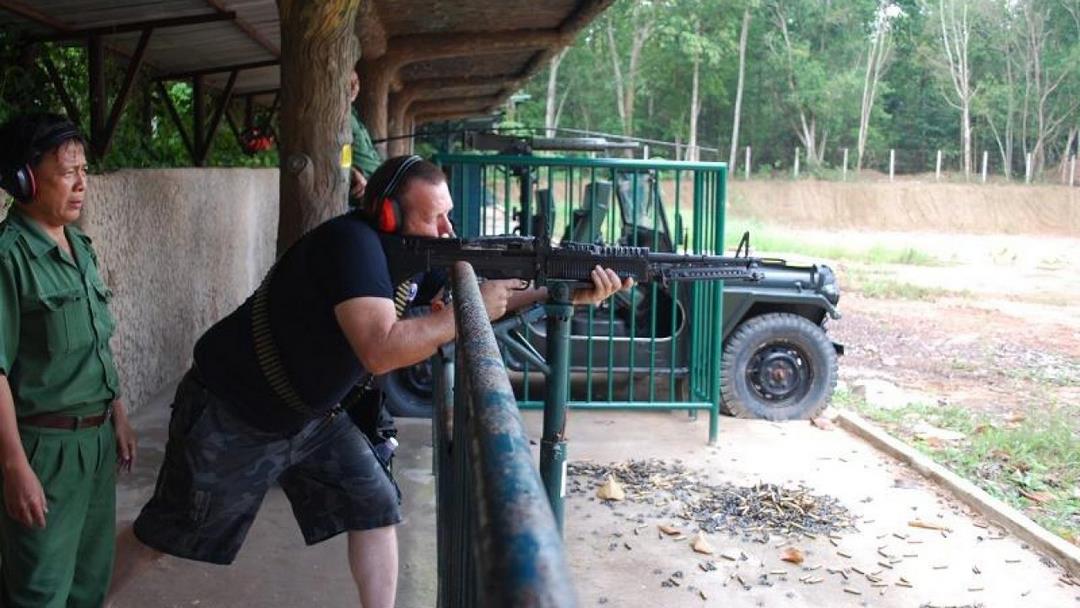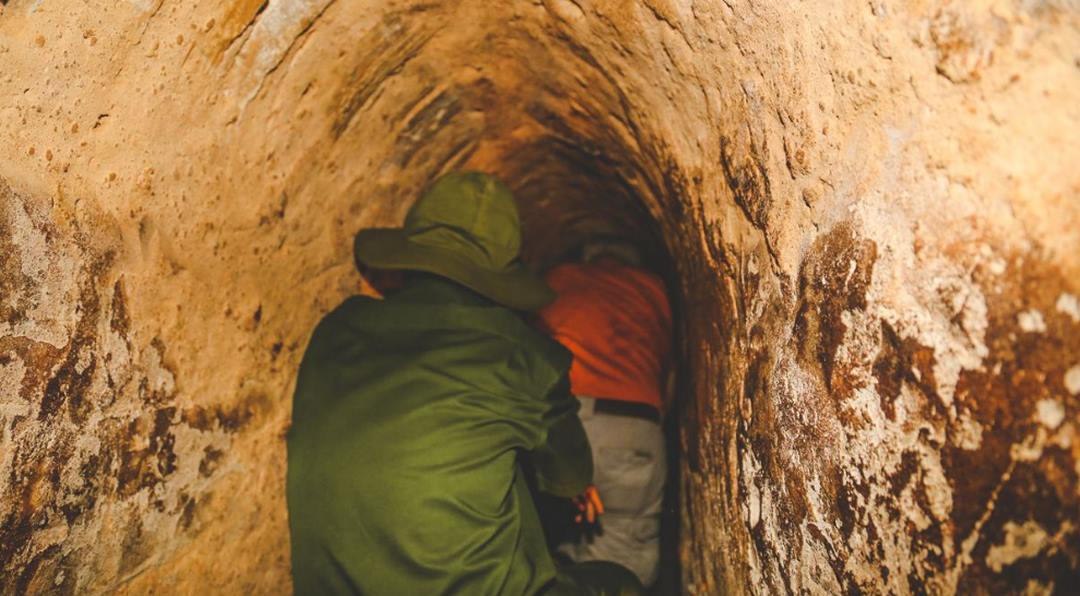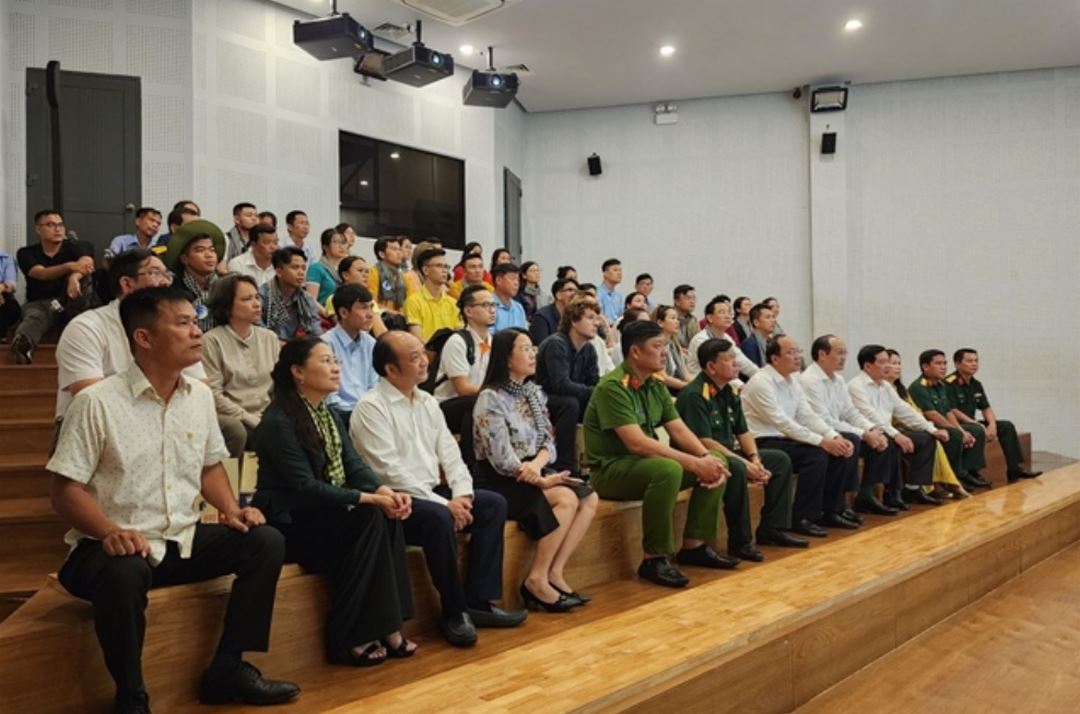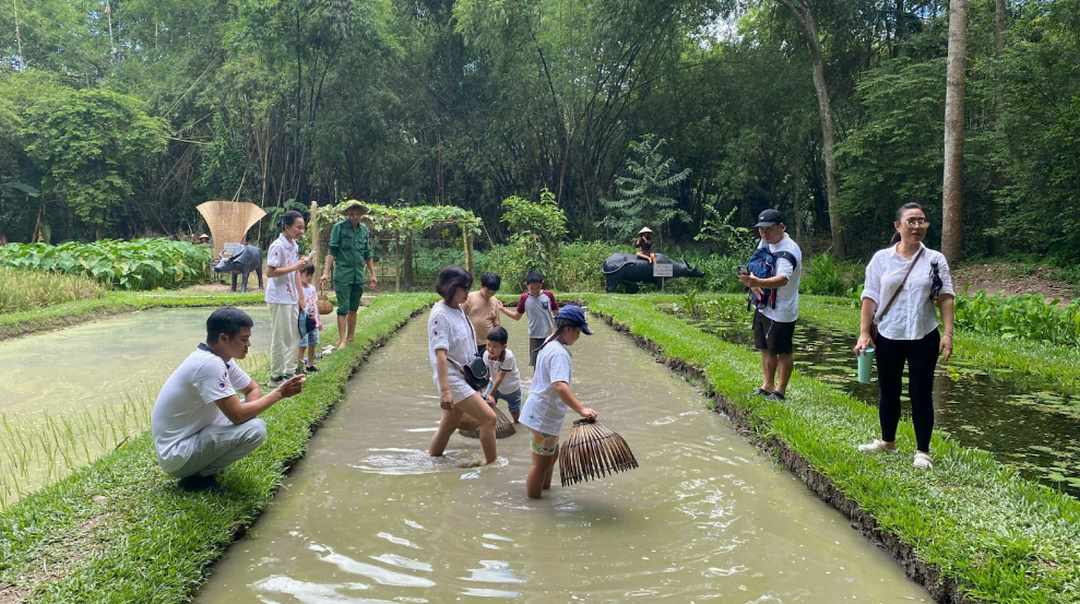Explore Cu Chi Tunnels Vietnam sightseeing areas
Cu Chi Tunnels Vietnam is not only a unique man-made structure but also a vivid testament to the nation’s resilience in the resistance war against America. Divided into two prominent areas: Ben Dinh and Ben Duoc, each place carries its own story, reflecting the creativity and determination of the people in the context of fierce war.

Overview of Cu Chi Tunnel in Vietnam
Cu Chi Tunnels Vietnam is recognized as one of the most unique man-made structures in the world and is listed among the seven most unique destinations in Southeast Asia. The tunnel system stretches for about 250km, including structures such as trenches, food storage, kitchens, wells, living quarters, offices and even a field hospital. These structures form a network of connections, helping Cu Chi Tunnels become a solid base for the Vietnamese army and people during the resistance war against the US.

The Cuchi Tunnel system was built during the resistance war against French colonialism, which lasted from 1946 to 1948. At that time, the army and people in the two communes of Tan Phu Trung and Phuoc Vinh An began digging short tunnels to hide and store weapons. In the beginning, each village built its separate tunnel, but as the need to move between villages increased, they connected these tunnels together, forming a more complex and interconnected system.

Today, the Cu Chi Tunnels Vietnam have been recognized as a special national historical site, attracting a large number of domestic and foreign tourists to explore and learn about the war history of the Vietnamese people.
What areas are the Cu Chi Tunnels divided into?
The Cu Chi Tunnels Vietnam historical site includes two main areas: Ben Duoc Tunnels and Ben Dinh Tunnels, each with its own historical significance and role during the resistance period.
Learn more about the Cu Chi Tunnels Ben Dinh
The Ben Dinh Tunnels, located along Provincial Road 15, served as a key strategic base for the Cu Chi District Party Committee. Following the Dong Khoi event in 1967, the movement to expand the tunnels in Cu Chi gained momentum, particularly in Nhuan Duc commune. This led to the development of a continuous tunnel system connecting four hamlets: Bau Tran, Xom Bung, Ba Thien, and Ben Dinh.

This area is characterized by forests spanning over 100 hectares and elevated, dry land, providing a safe retreat for soldiers and civilians during sweeps. The Cu Chi District Party Committee selected Ben Dinh as a central base to lead the resistance against the US from 1968 to 1975.
Visitors can watch a documentary detailing the history of the tunnels and explore various sections, including the living quarters of District Party Committee leaders, the weapons manufacturing tunnel, and a house displaying homemade weapons.
A key highlight is the trench network and tunnel roads leading to the Dong Du base, where the US 25th Division was stationed. Visitors can also see the remains of an M41 tank destroyed by Cu Chi guerrillas in 1970, a symbol of the US army’s defeat in this region.

In addition to exploring history, visitors can experience shooting at the National Defense Sports Shooting Range. At the end of the tour, visit the souvenir shop with unique products such as handicrafts and local specialties.
Get to know the Cu Chi Tunnel Ben Duoc
Ben Duoc Tunnels, located in Cu Chi District, Ho Chi Minh City, is one of the important historical relics of Cu Chi Tunnels Vietnam that marked the resistance war against the US. With a tunnel system of about 250km long, Ben Duoc was not only a shelter but also played an essential role in the resistance strategy of the army and people of the South.
Built in the 1960s in the context of fierce war, the tunnels were the residence, living and working place of the armed forces and local people. It helped protect lives, organize military activities, supply food and treat wounded soldiers.

The tunnel system spans multiple levels, ranging from 3 to 10 meters deep, and includes various functional areas such as meeting rooms, kitchens, storage areas, and infirmaries. Its smart architecture, combined with the dense forest terrain, provided a secure refuge for soldiers and civilians.
Today, the Ben Duoc Tunnels stand not only as a historical site but also as a symbol of the indomitable spirit and patriotism of the Vietnamese people. Visitors can gain insights into the hardships and sacrifices endured during the war, experiencing the resilience and ingenuity that defined the resistance. The site has been carefully developed to attract tourism while preserving the area’s historical and cultural values.
Plan a full day tour of Cu Chi Tunnels
To have a complete trip, you should depart from Ho Chi Minh City early in the morning, around 6am, by bus, taxi or motorbike to avoid traffic jams and the heat. The journey of nearly 70km will take about 150 minutes.
When arriving at Cu Chi Tunnels Vietnam, you will buy an entrance ticket for 35,000 to 50,000 VND/person. Start the journey with a vivid documentary about the guerrilla war, helping you better understand the resilience of our people.

Explore the secret tunnel system stretching over 220 km, where soldiers and civilians took refuge during the resistance. You can crawl through the tunnels, learn about combat emplacements, spike traps, homemade mines, and the Hoang Cam stove. Don’t miss the chance to experience live-fire shooting, giving you a taste of what it was like to be a real soldier.
After your exploration, enjoy local specialties such as sweet potatoes, cassava, and yams dipped in sesame salt—the staple foods of the people during the resistance. Next, visit the Ben Duoc Martyrs’ Memorial Temple in Cu Chi, a place that honors the heroes who sacrificed their lives for the country, and light incense to pay your respects.

Afterward, take a break and enjoy lunch at a local restaurant featuring authentic Vietnamese cuisine. Following the meal, visit the area within the Cu Chi Tunnels site that recreates the village of the liberated zone, where three distinct spaces transport you back in time:
- The first space showcases life in the newly liberated area from 1961 to 1964.
- The second space illustrates the period of local conflict from 1965 to 1968.
- The third space reflects the conditions of the “white zone” in Cu Chi from 1969 to 1972.
To round out your visit, engage in hands-on activities like planting rice, pounding rice, and making traditional rice paper. These experiences offer a glimpse into the simple yet meaningful daily life of the local people.

On the way back to Ho Chi Minh City, stop by to buy Cu Chi specialties such as honey and jams as souvenirs. The Cu Chi Tunnels Vietnam tour is not only a journey of historical discovery but also an opportunity for you to experience and connect with the culture here.
Conclusion
The historical sites at Cu Chi Tunnels Vietnam, especially Ben Dinh and Ben Duoc, are not only interesting stops for tourists but also lessons about patriotism, sacrifice and determination of those who lived and fought here. Exploring these areas not only helps visitors better understand the painful history of the nation, but also conveys a strong message of peace and freedom.

